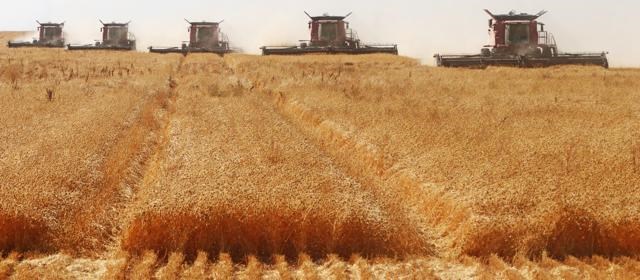The 2020 harvest is all wrapped up in the southeast region, and farmers are doing fall work as the weather conditions allow, although recent cold temperatures and snow have prevented some of the work being done.
Fall weed control and fertilizer applications have been limited for some due to dry soil conditions.
Crop yields varied greatly within the southeast depending on the moisture received throughout the growing season. There were impacts caused by the hot and dry conditions this past summer.
Spring moisture reserves and some timely rainfall in certain areas resulted in average yields for farmers.
In the southeast, winter wheat had an average yield of 44 bushels per acre (bu/ac); fall rye, 46 bu/ac; hard red spring wheat, 45 bu/ac; durum, 44 bu/ac; other wheat varieties, 48 bu/ac; oats, 72 bu/ac; barley, 66 bu/ac; flax, 26 bu/ac; canola, 37 bu/ac; soybeans, 23 bu/ac; and peas, 41 bu/ac.
Yields for canaryseed averaged 1,324 pounds per acre (lbs/ac); mustard, 1,086 lbs/ac; lentils, 1,599 lbs/ac; and chickpeas, 1,259 lbs/ac.
Crop quality in the region was good overall, with the majority of crops falling within the top two grades due to limited fall moisture during harvest, and limited disease. There were some reports of downgrading due to ergot in durum crops.
Moisture conditions remain a concern for farmers in the southeast. With below average precipitation during the growing season, paired with strong winds throughout much of the summer, topsoil moisture conditions are short or very short in most of the region.
Farmland will need significant amounts of moisture before next spring to replenish topsoil and subsoil moisture conditions for the next growing season.
Heading into winter, cropland topsoil moisture is rated as eight per cent adequate, 48 per cent short and 44 per cent very short. Hay and pasture land topsoil moisture is rated as six per cent adequate, 32 per cent short and 62 per cent very short.
Average hay yields on dry land are, in tons per acre, as follows: alfalfa, 1.1; alfalfa-brome, 1.2; other tame hay, 0.86; wild hay, 0.76; and greenfeed, 1.7.
Most livestock producers indicate they will most likely have adequate hay, straw, greenfeed and feed grain heading into winter, although farmers in drier areas have reported many will have inadequate winter feed supplies and shortages will be likely.
Along with affecting hay and feed yields, the dry conditions this year have resulted in shortages or potential shortages of water supplies for livestock.
Acres seeded to winter wheat or fall rye are below average this fall due to drier than normal field conditions. There were concerns that crops would not germinate and establish properly for livestock.



